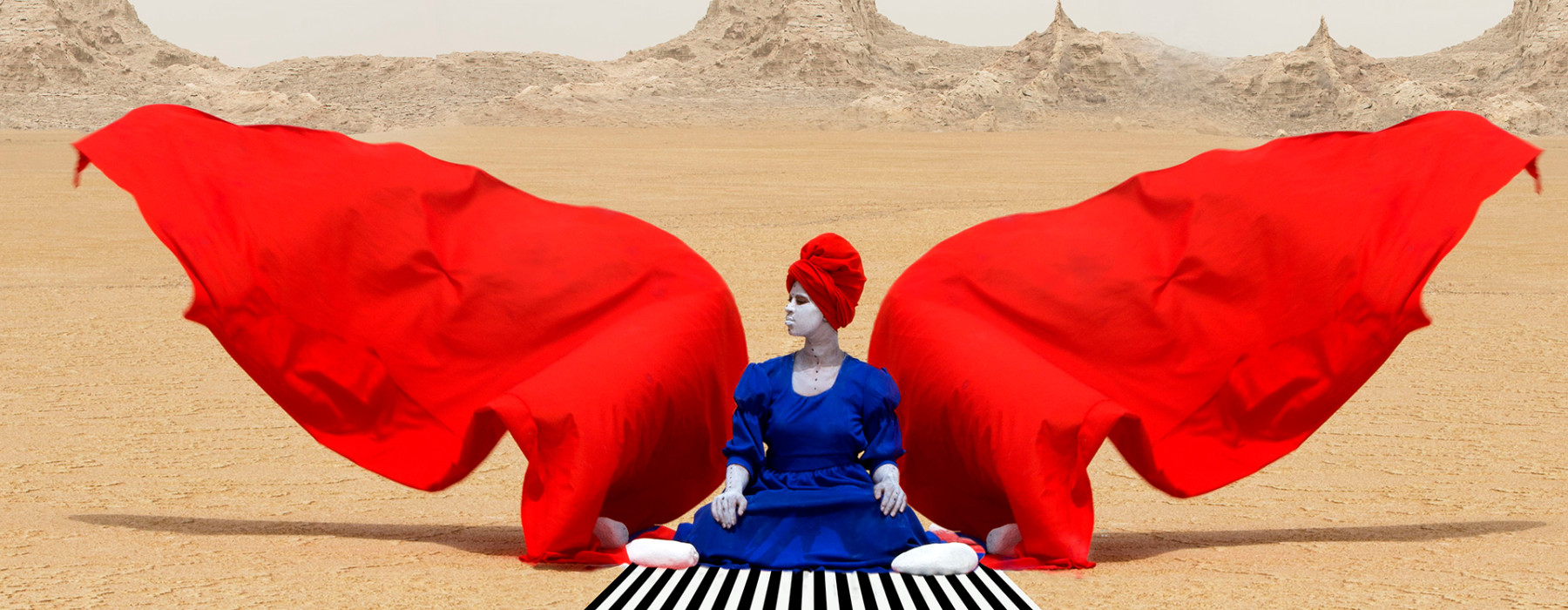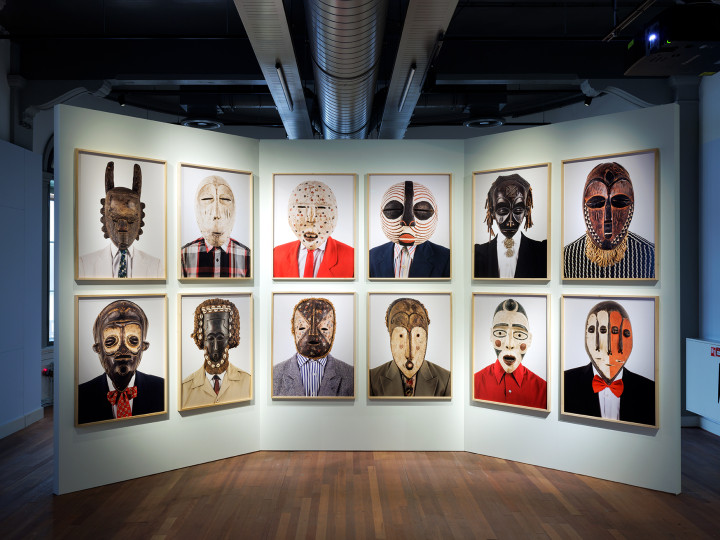
A World in Common explores the dynamic landscape of photography on the African continent today. 22 artists of different generations and from different regions come together. They explore how photography and film enables them to explore the legacy of the past and imagine a shared future full of possibilities.
A World in Common is curated by Osei Bonsu, British-Ghanese writer and curator of International Art at Tate Modern, where he is responsible for developing the museum's collection and broadening the representation of artists from Africa and the African diaspora. For A World in Common, Bonsu drew on the theories of Cameroonian philosopher Achille Mbembe, inviting visitors to imagine "a common world". In the exhibition, leading artists show how photography can provide alternative visions of Africa's many histories, cultures and identities through more than 100 works. These works challenge national, political and cultural boundaries and explore different perspectives from Africa's rich and diverse history. Their work moves us to change our historical understandings by helping us think about the world from and with Africa.
Since the invention of photography in the 19th century, Africa has largely been defined by Western representations of African cultures and traditions. During the colonial period, photography was utilised as a means of viewing African societies through a Eurocentric lens. The artists in the exhibition explore the medium's past and embrace its potential to give new meaning to the present and shape the future.
INTIMATE SCENES AND OTHERWORLDLY LANDSCAPE
The exhibition shows how photography offers a contemporary perspective on cultural heritage, spirituality, urbanisation and climate change. Regal portraits of kings and queens merge with intimate scenes of family life and stark documentary images of post-industrial ruins. On the one hand, family photo albums and stylishly composed studio portraits reflect the shared sense of community and belonging that connects Africa and its global diaspora. Scenes of polluted landscapes, on the other hand, address the growing impact of consumption on climate change. The exhibition guides viewers across many landscapes, borders and time zones, showing how photography allows the past and future to coexist in unexpected yet powerful ways.
IDENTITY AND TRADITION
In the pre-colonial period, ancient African dynasties played an important role in shaping spiritual and cultural identity. Artist Kudzanai Chiurai draws inspiration from this heritage by weaving historical narratives with imagined scenes from the royal past. He explores histories of anti-colonial resistance and political rebellion. Khadija Saye, Rotimi Fani-Kayode and Maïmouna Guerresi use rites of passage and commemorative ceremonies to depict portals between the living and their ancestors. Edson Chagas and Zina Saro-Wiwa make photography a powerful medium for activating cultural memory and collective identity.
FAMILY PORTRAITS
Photo studio culture in Africa developed mainly early (from the 1840s) in West African port cities. Through travelling photographers of African and European descent, they spread to inland capitals. This laid the foundation for the mid-20th century bloom of studio photography, when many African countries gained independence. This first generation of photographers - such as the now world famous Malick Sidibé or Mama Casset - became frames of reference for a new generation of artists featured in A World in Common. Makers such as Atong Atem, Sabelo Mlangeni and Kelani Abass expand on the history of self-expression and representation in making family portraits that focus on kinship and belonging. Abass's work previously featured in MoMa's renowned photography exhibition 'New Photography'. Mlangeni won the Columbia University II&I fellowship and artist residency in 2022 and continues to develop visual essays on intimacy and communitarian traditions.
LOOKING TOWARDS THE FUTURE
The inheritance of colonialism inspires artists to create new worlds, despite the stark realities of globalisation and inequality. This becomes visible when artists reflect on the impact of climate change and urbanisation on local communities. The work of Kiripi Katembo, Fabrice Monteiro and Mário Macilau, document the transformation of urban cityscapes and the impact of excessive consumption on the environment. David Petros explores themes of migration and climate activism in ways that allow the viewer to engage with the artist, exploring alternative ways of being. For their work, these artists have achieved international recognition: Monteiro was one of five winners of the 2021 CAP Prize and Macilau won the 2023 James Barnor photography prize.
ALTERNATIVE HISTORIES
Wereldmuseum is interested in the role of art in raising questions about the world. It inspires an open view of the world and can contribute to global citizenship. Artists use their work to understand, share and connect their experiences and observations to the present. Art can influence the world by highlighting beauty or addressing social injustices. Wereldmuseum is currently presenting two exhibitions: In Brilliant Light at Wereldmuseum Leiden, which focuses on African contemporary art, and A World in Common at Wereldmuseum Rotterdam, which highlights photography. Both exhibitions show how artists from Africa and the diaspora draw inspiration from the continent's history and culture to address globally important issues such as racism, restitution, urbanisation or migration. Contributing to a decolonial perspective on Africa, these artists broaden the reading of the past, bring contemporary issues to light while dreaming of a shared future full of possibilities.
